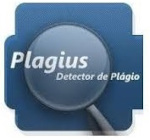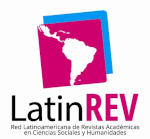IMMIGRATION AND LINGUISTIC DIVERSITY IN E/FL TEACHING FROM THE SHORT FILM MIGRANT
DOI:
https://doi.org/10.47180/omij.v5i3.322Keywords:
Teaching of SFL (Spanish as a Foreign Language); Short Film; Lesson Plan; Cinema.Abstract
The present article aims to propose the use of the short film Migrante (2021), by Ezequiel Dalinger and Daniel Iezzi, as a pedagogical tool for teaching Spanish as a Foreign Language (SFL). The proposal encompasses the promotion of the four language skills: reading, writing, speaking, and listening. It aims to encourage students' critical thinking about the theme of immigration and the linguistic diversity within this context. Based on this direction, our discussions are focused on specific objectives: i. Exploring immigration culture narratives in Latin American countries; ii. Promoting the four linguistic skills along with identity reflections; iii. Stimulating students' critical thinking; and iv. Presenting a lesson plan based on the short film. The research is grounded in key scholars, including Moraes (2023), Freitas (2008), and Cugik and Ignaczuk (2015), among other theorists that support our voices. The adopted method is bibliographic research combined with a qualitative approach based on a literature review. The results of this work aim to develop a lesson plan that fosters critical reflection on immigration, which is an issue that transcends just Spanish speakers and resonates with the Latin American community as a whole, thus stimulating the learning of a foreign language and social dimensions.
Downloads
References
ALCANTÂRA, Jean Carlos Dourado de. Curta-metragem: Gênero discursivo propiciador de práticas multiletradas. Cuiabá, 2014.
ALMEIDA FILHO, J. C. P. Dimensões comunicativas no ensino de línguas. Campinas, SP – Pontes 1993
ANIMATION. MIGRANTE | cortometraje. Disponível em: <https://www.youtube.com/watch?v=7qJDu-rMxl4>. Acesso em: 17 ago. 2024.
DE SOUZA, F. M.; DA SILVA, A. C. P.; BONGESTAB, C.; MACIEL, H. de S.; DE MACEDO JUNIOR, H. A.; AGUIAR PEREIRA, L. de S. N. El audiovisual en la difusión del español como lengua de integración en el contexto latinoamericano. CONTRIBUCIONES A LAS CIENCIAS SOCIALES, [S. l.], v. 17, n. 1, p. 8539–8549, 2024. DOI: 10.55905/revconv.17n.1-515. Disponível em: https://ojs.revistacontribuciones.com/ojs/index.php/clcs/article/view/4907. Acesso em: 11 nov. 2024. DOI: https://doi.org/10.55905/revconv.17n.1-515
FREITAS, Luciana Maria Almeida de. Práctica de la Enseñanza de Lengua Española I. / Luciana Maria Almeida de Freitas, Talita de Assis Barreto. — Rio de Janeiro: CCAA Editora, 2008.
LAZARINI,L.S. Identidades e representações das periferias no cinema brasileiro atual: notas para uma reflexão a partir dos Estudos Culturais. Intercom, 2004, p.12
MORAES, R. L. O uso de curta-metragem como recurso didático no ensino de língua espanhola. Em: DE MELO MARCELINO, M. (Ed.). Educação e Transformação Social: vivências e experiências. Rua das Orquídeas, 399, Residencial Cidade Jardim, CEP 38.307-854, Ituiutaba, MG.: Editora Barlavento, 2023. v. 1p. 206.
RICHARDS, J. C.; RODGERS, T. S. Enfoques y métodos en la enseñanza de idiomas. Madrid: Cambridge University Press, 2009.
SETTON, M. D. G. J. Mídia e Educação . São Paulo: Contexto, 2010. SODRÉ, Nelson Werneck. História da Imprensa no Brasil. São Paulo: Mauad, 1994.
SEVERINO, Antônio Joaquim. Metodologia do trabalho científico [livro eletrônico] – 1. ed. -- São Paulo : Cortez, 2013. 1,0 MB ; e-PUB. Bibliografia ISBN 978-85-249-2081-3
VILLARREALJ. Análisis sobre el Uso de las Redes Sociales y su Efectividad en el Apoyo al Aprendizaje Formal de una Segunda Lengua: Una Revisión Bibliográfica(Tesis De Pregrado). Universidad Colegio Mayor de Nuestra Señora del Rosario,Bogotá.(2017).
ZANELLA, Liane Carly Hermes, Metodologia de pesquisa / Liane Carly Hermes Zanella. – 2. ed. reimp. – Florianópolis: Departamento de Ciências da Administração/ UFSC, 2013.
Downloads
Published
How to Cite
Issue
Section
License
Copyright (c) 2024 Open Minds International Journal

This work is licensed under a Creative Commons Attribution-NonCommercial-NoDerivatives 4.0 International License.
The authors declare that any work submitted, if accepted, will not be published elsewhere, in English or in any other language, and even electronically, unless it expressly mentions that the work was originally published in the Journal.













